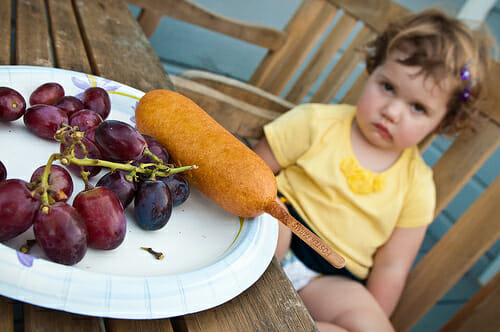We all have known at least one kid – and sometimes that kid was us! – who was a picky eater: the one who insists on chicken fingers instead of a hamburger, or who loves fruit but won’t touch a vegetable. Maybe you’ve got a picky eater on your hands and when you asked advice of a friend or family member were told,
“Don’t worry! He’ll eat when he’s hungry.”
Sounds reasonable, but is it good advice? Not really.
Some kids are “just” picky eaters – the issues caused by their pickiness aren’t usually life-threatening or likely to cause serious delays. For some children, however – what we call “problem feeders” – the problem goes much deeper, and can cause numerous health issues due to inadequate caloric intake, poor growth, and vitamin and mineral deficiencies. If left untreated, malnutrition – and in some instances, dehydration – can impair a child’s intellectual, emotional, and academic development.
In the case of the picky eater, feeding therapy can be helpful.
In the case of the problem feeder, feeding therapy is a must.
Both typical children and those with disabilities or other medical diagnoses can be problem eaters – children with autism are particularly at risk. Children who experience pain or discomfort when eating may have food aversions and/or a fear of eating, as do many children with sensory integration dysfunction and children who struggle with gastrointestinal disorders, reflux, or irritable bowel syndrome.
Picky Eater vs. Problem Feeder: How Can You Tell the Difference?
Although picky eaters and problem feeders have a lot in common, there are a few warning signs that indicate a child needs swift intervention:
- Both picky eaters and problem feeders have a limited repertoire of foods, but problem feeders tend to eat fewer and fewer foods over time until they limit their foods to only about 5-10 options. Picky eaters will eat at least 30 different foods.
- Picky eaters may reject certain foods due to “burn out” after eating them constantly, but the foods can be reintroduced without any trouble after a few weeks. Problem feeders, once they have rejected a food, aren’t willing to eat them again after a break.
- Picky eaters may be reluctant to try a new food on the plate but will eventually touch or taste it, albeit reluctantly; problem feeders react strongly – often crying or “melting down” when presented with new foods. Sometimes problem feeders may even react strongly to watching another person eat the food, even if he isn’t expected to eat it himself.
- Picky eaters will eat at least one food from most texture or nutrition groups, while problem feeders will refuse entire categories of foods (for example, a picky eater may like chicken, grapes, and chocolate pudding, but not beef, strawberries, or vanilla pudding, whereas a problem eater might reject all meats, all fruits, and/or all pudding and yogurt varieties).
- Picky eaters may eat different foods from the rest of the family, but still typically eat with the family. Problem feeders eat different foods than the family, but may also often not eat with the family.
Whenever a child’s eating has the potential to keep him from getting all of the nutrients he needs, that’s a red flag that intervention may be needed. For some picky eaters, consistency, sticking to a routine, continually offering new foods, and adding a little fun to mealtimes may be enough to break him out of his food rut. However, many picky eaters can benefit from feeding therapy, and for problem feeders, intervention is crucial.
Kid’s Creek Therapy works with both picky eaters and problem feeders through our Feeding Therapy program. If you or someone you know would like to learn more about how we can help your child, contact us for a free consultation.
Melanie McGriff, M.Ed., clinic director and speech therapist
Photo Courtesy David Goehring/Flickr
Reference:
Dr. Kay A. Toomey. (1997/2019). Picky Eaters vs Problem Feeders.








